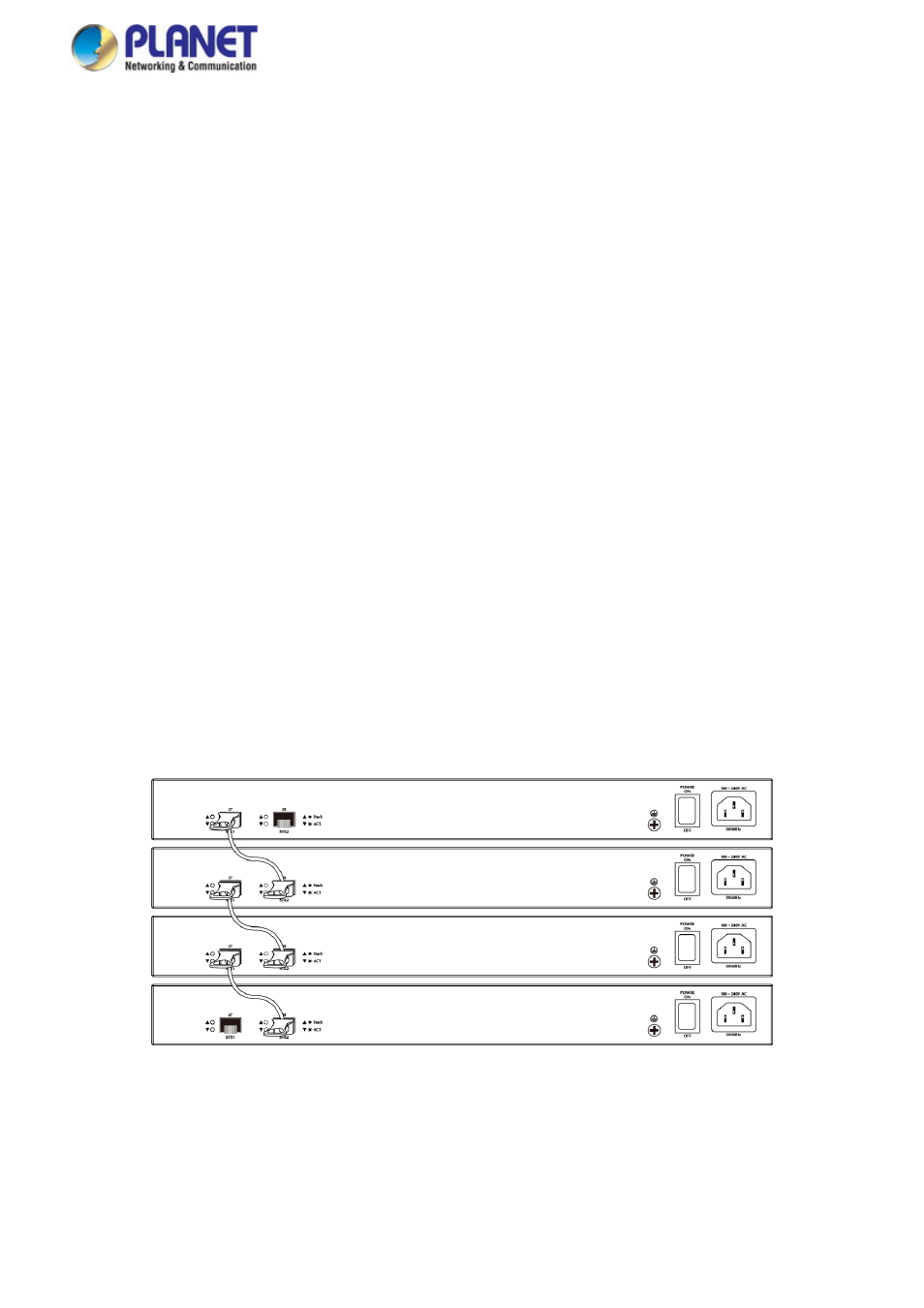19 stack – PLANET SGS-5220-24P2X User Manual
Page 337

User’s Manual of SGS-5220 Series
4.19 Stack
Using Stacking, it is possible to connect a number of switches together in a stack, which behaves as a single switch as seen
from outside the stack.
Two types of stack topologies are supported:
Ring topology
Chain topology (same as a disconnected ring)
Multiple PLANET SGS-5220 series devices may be connected together to constitute a ring or chain stack topology using the
STX / 10Gbps SFP+ ports as interconnect links. Dedicated stacking features built into SGS-5220 series makes all devices in the
stack operate together as a single, much larger switch. Among the stacking features are:
Hardware controlled stack wide learning and continuous automatic MAC table synchronization
Shortest path forwarding, providing low latency and optimal use of stacking link bandwidth
QoS consistency across stack
Single point of management for simple stack administration
Low Cost and Flexible SFP+ stacking solution
Real Plug and Play connectivity
The following figure shows an example with five devices in a ring topology stack. Each device in the stack is, in a stack context,
called a unit. The ports connecting the units are called stack ports, and the ports connecting to external hosts and switches are
called front ports.
Chain Stack:
A chain of sample switches, that is, no redundant forwarding paths.
Figure 4-19-1
Chain Stack topology
337
